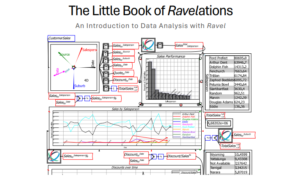Table of Contents
What is value?
How do economists define it?
What Adam Smith said
The value of any commodity, therefore, to the person who possesses it, and who means not to use or consume it himself, but to exchange it for other commodities, is equal to the quantity of labor which it enables him to purchase or command. Labor, therefore, is the real measure of the exchangeable value of all commodities.
Smith, A., Cannan, E., & Stigler, G. J. (1976). Chapter 5, p 34. In An inquiry into the nature and causes of the wealth of nations. essay, The University of Chicago Press.
Labor alone, therefore, never varying in its own value, is alone the ultimate and real standard by which the value of all commodities can at all times and places be estimated and compared. It is their real price; money is their nominal price.
Smith, A., Cannan, E., & Stigler, G. J. (1976). Chapter 5, p 37. In An inquiry into the nature and causes of the wealth of nations. essay, The University of Chicago Press.
What Karl Marx said
The labor theory of value is a major pillar of traditional Marxian economics, which is evident in Marx’s masterpiece, Capital (1867). The theory’s basic claim is simple: the value of a commodity can be objectively measured by the average number of labor hours required to produce that commodity.
Prychitko, David. “Marxism.” Econlib, 5 Feb. 2018, https://www.econlib.org/library/Enc/Marxism.html.
Are they right?
While there is general agreement amongst economists that work creates value, there are criticisms.
Does all work create value? And is the perceived value equal to the amount of work?
Does all work create value?
While the wealth of a society is MEASURED in dollars, it IS the aggregate of all the goods and services available to members of that society.
So does work that doesn’t produce something create value?
For example, the work of packaging and reselling mortgage-backed securities?
And is perceived value equal to the amount of work?
For this question, the answer is definitely not.
If the perceived value of something was equal to the amount of work put into it existing, celebrity memorabilia would not sell for such high prices at auction.
So again, does all work create value?
It depends on how you define value.
By price, or by productive output.
What is “rent-seeking”?
Adam Smith wrote that the components of the price of things are profit, wages, and rent.
Profit involves risking capital and Smith wrote that producing stuff requires this risk of capital.
Wages of course are paid to the people doing the producing, so clearly producing stuff requires wages.
Rent is money paid to somebody because of something they own.
He wrote about the rent of land:
The rent of land, it may be thought, is frequently no more than a reasonable profit or interest for the stock laid out by the landlord upon its improvement. This, no doubt, may be partly the case upon some occasion; for it can scarce ever be more than partly the case. The landlord demands a rent even for unimproved land, and the supposed interest or profit upon the expense of improvement is generally an addition to this original rent. These improvements, besides, are not always made by the stock of the landlord, but sometimes by that of the tenant. When the lease comes to be renewed, however, the landlord commonly demands the same augmentation of rent, as if they had been all made by his own.
Smith, A., Cannan, E., & Stigler, G. J. (1976). Chapter 11, p 161-162. In An inquiry into the nature and causes of the wealth of nations. essay, The University of Chicago Press.
Adam Smith writes about “the rent of land” quite a bit, but scholars agree the concept of rent has extended to ownership in general and is not limited to the ownership exclusively of land.
Rent is paid for:
- Interest on a loan.
- Dividents for stocks they own.
- Rents for the use of land or buildings.
Adam Smith wrote further that while capital and wages are productive uses of money as they result in the production of things that have value, rents divert money away from production and into the pockets of the rent seeker.
Rent-seeking is the activity of acquiring stuff for purposes of receiving rent income.
And, while he acknowledged a little bit of rent is unavoidable, rent-seeking is economically parasitic.
In modern language, what he called rent-seeking is what we now call predatory capitalism.
This leads us to…
Productive spending vs speculative spending
Productive spending is spending that increases our ability to produce more goods and services. Per Adam Smith, capital and wages.
Speculative spending is spending with the expectation that you can make money with money, and this spending diverts money away from increasing our ability to produce more goods and services. Per Adam Smith, rent.
This leads us to…
Financialization
financialization means the increasing role of financial motives, financial markets, financial actors and financial institutions in the operation of the domestic and international economies
Epstein, G. A. (2005). Introduction: Financialization and the World Economy. In G. A. Epstein (Ed.), Financialization and the World Economy (pp. 3-16). Cheltenham: Edward Elgar Publishing Ltd.
Financial services are not in and of themselves inherently bad.
Banking, insurance, stocks, bonds, etc. all have their places in an economy.
Having said that, financialization is a term that describes the widespread pursuit of rent-seeking as a means to earn profits without increasing the production of goods and services.
It’s when the pursuit of making money from money becomes a dominant force in an economy.
Examples of financialization
Mortgate backed securities, credit default swaps, etc
Why did very few people see the great financial crisis coming?
Because in pursuit of profits investment banks created and sold derivatives (products whose value is derived by an underlying asset) of increasing complexity.
The level of abstraction got to be so great that it became very difficult to not only determine if the underlying assets (in this case residential mortgages) had any value, it became difficult to even know what they were.
To know which mortgages were even bundled into an MBS.
As you know, it didn’t end well.
Corporate stock buybacks
Corporate stock buybacks are when a corporation uses profits to purchase its own shares in the public stock markets.
Prior to 1982, they were illegal stock price manipulation.
The idea back then was in order for a firm to increase its share price, it should design new products, acquire more customers, sell more stuff.
In 1982, the SEC adopted rule 10b-18, which meant the issuer of stock was protected from the charge that it was manipulating the price of its stock when it repurchased its shares.
Now, stock buybacks are a standard tactic for a company to boost its share price.
On occasion, the amounts spent on stock buybacks seem staggering.
- Apple: $25.6B
- Alphabet: $12.8B
- Facebook: $8.4B
- Oracle: $8.0B
- Microsoft: $7.2B
In ONE quarter.
Because the money spent on them does not improve the productive capacity of our economy but rather pulls money out of the economy and parks it on the sidelines.
Payday lending
Payday lending is just lending. Loaning people money, with the understanding that they pay it back, with interest.
It may however be the most abusive form of predatory lending practiced.
You may borrow $200 for two weeks and have to pay it back in one lump sum with a fee of $30.
And while loan terms are short, and the repayment amount can look small due to the small loan amounts, the annual percentage rates are often 400% or higher.
In the example above, a $30 fee on a two-week loan of $200 is an ARP of 390%.
These are so predatory, I’m not sure why they’re legal.
Corporate landlords
At this point in American history, one of the largest buyers of single-family homes is pension funds, investment firms, and Wall St banks.
All by itself, this is increasing demand for single-family homes and causing prices to rise.
But from the perspective of the corporate investor, it’s easy money.
The work of finding tenants, handling repairs, collecting rents, etc is done by property management firms, who granted charge a fee to do this, but to the corporate investor, it’s just money in, in exchange for money back.
And the ROI is good.
Productive spending vs speculative spending?
Productive spending grows an economy
This is a non-controversial statement.
If the intention is to improve the overall health of the economy, of society, we implement policies to encourage more productive spending (more spending on the production of goods and services) and less speculative (asset purchase) spending.
Productive spending adds value to an economy.
Speculative spending creates asset bubbles
Part of the reason this happens is speculative spending literally creates asset bubbles, which eventually burst.
Investors generally borrow to invest. In investor speak, this is called “using leverage”.
As long as the asset value grows, even slightly, the investors do not lose money.
And while investors are jumping into a market, no matter the asset class, the demand for the assets created by their spending increases the prices of the assets.
In the short term, this diverts spending away from the production of more goods and services.
Additionally, it makes the asset harder to buy for people of limited means.
Such as first-time home buyers.
But, sooner or later asset bubbles burst.
And when they do, it gets ugly.
In 1929 the mania to buy stocks on margin (with debt) came crashing down when the valuations in the stock market fell and massive amounts of people could not make their “margin calls” which required adding money to their brokerage accounts.
This inability to pay rippled through the economy and triggered The Great Depression.
In 2008 the mania of providing mortgages to people who could not make the payments, then bundling that bad debt into Mortgage-Backed Securities to sell to investors came crashing down when the people who couldn’t afford their mortgage payments stopped making their payments, en masse.
This inability to pay rippled through the economy and triggered The Great Recession.
Which bring us back to “value”
Definitions matter.
If you define value as “I made money from money” then speculative spending creates value for the people who take profits and get out before the bubble bursts.
If you define value as “society has more material wealth” then speculative spending sucks value out of society, and only productive spending creates value.
I’m someone who takes a broader view of things, so I gravitate to the idea that value is when society has more material wealth.
So while The Labour Theory of Value may not be spot on, policies that distinguish between productive spending and speculative spending matter.
If we want greater material wealth for as many of us a possible, we want policies that increase the production of goods and services while simultaneously decreasing the formation of asset bubbles.
And you know what, if we wanted to, we could do that.



